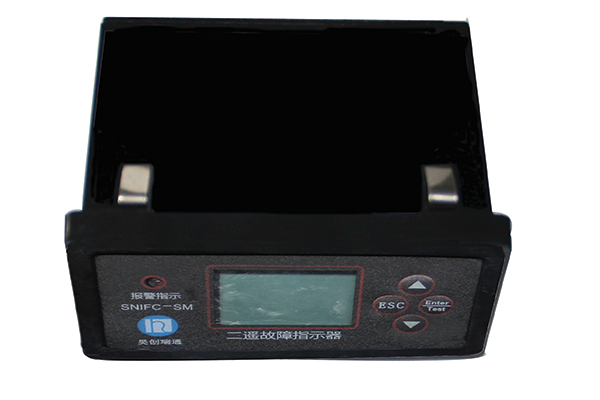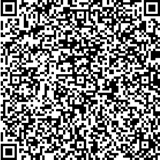The panel fault indicator is another main product of the intelligent monitoring system produced by our company. It is widely used in smart power applications in China.
The panel fault indicator is produced based on State Grid Corporation standards (Q/GDW436一2010). It is a new monitoring system installed on the ring main unit, cable branch box and other equipment to monitor cable short circuits, detect ground faults and monitor the temperature of cable T-type heads. The panel fault indicator is used for real-time monitoring cable short circuit and the single-phase grounding faults. When the faults occur, the operators can quickly determine the fault section and find out the faults location by the alarm of the testing terminal. At the same time, monitoring information will be sent to the monitoring center server, then, the faults section and location will be shown on the computer screen, to help the worker quickly determine the faults location. More than 90% of the ring main unit failure is caused by mis-installation of cable T-type head. So, it is quite important to monitor the temperature of the head. Our indicator is your best choice for testing and solving the line faults problem, which ensures the power supply reliability and economic benefits.
The panel fault indicator could be installed on overhead lines, power cables or in the power equipment, such as box-type substation (BTS), ring main units (RMU), cable branch box, etc., indicating the outgoing lines, branches and sections.
| Panel fault indicator | ||
| Item | parameters | |
| Technical parameters | Power line voltage | 6-35KV |
| Power line current / frequency | 0-630A/50Hz | |
| Working power | Built in 3.6V/3800mAh lithium battery | |
| Static power dissipation | ≤0.03mW | |
| Dynamic power dissipation | ≤50mw (High speed communication states) | |
| Current accuracy | 5% | |
| temperature detection Range | -40℃ ~ 120℃ | |
| Temperature detection accuracy | ±2℃ | |
| Cross sectional area of traverse | 35m2 ~ 300m2 | |
| Power line current dead-time voltage value | 2A | |
| Reset time | 1 min (can be set ) | |
| Timing reset time | 8 h (can be set) | |
| action number | ≥10000 | |
| Service life | ≥8years | |
| Weight | ≤500g | |
| Installation modes | directly installed on the conducting wire through the clamps, can be electrically mounted and disassembled, and the installation tool is provided | |
| IP | IP67 | |
| working environment | Working altitude | ≤1000m |
| working temperature | -40℃ ~ 70℃ | |
| Maximum daily temperature difference | 25℃ | |
| Working environment humidity | ≤100% | |
| Earthquake resistant capacity | Ground horizontal acceleration 0.3g Ground vertical acceleration 0.15g simultaneously work on three sinusoid frequency | |
Power parameter measurement (remote measurement)
The sensor can measure the current and voltage (reference voltage), power cable head temperature and related power parameters, and transmit information to the fault indicator through the data interface, and then transmit to the monitoring platform by the communication terminal of indicator.
Short circuit fault monitoring (remote communication)
The sensor has the function of short circuit fault detection, and the detection principle is as below:
a) Adaptive principle, that is, the detection principle of the sudden current. Short circuit detection takes current mutation as a reference, automatically matches with the load current and the outlet of substation protection setting. When the load current is IL≤150A, ΔI≥100A; when the load current is IL > 150A, I > 1/2*IL; quick break / over current is more than 150A, the delay time is 40ms≤ΔT≤300ms, reclosing interval is more than 0.2S.
b) Quick break principle, that is, principle of overrun detection. When the load current is in the slow changes, it can’t satisfy the short-circuit faults needs, therefore, the overrun detection way is adopted to detect the faults.
The comprehensive application of two detection principles can greatly improve the fault detection accuracy, and the information is transmitted to the fault indicator through the data interface; at the same time, the fault signal is transmitted to other panel type fault indicators by the fault signal interface.
Ground faults monitoring: The sensor has the function of ground faults detection. The sensor judges the ground faults by detecting the zero sequence current, and the zero sequence current threshold can be set as 10A~200A.
Faults recording function: It can record faults line load waveform within 500ms, and transmits the data to the fault indicator, and then transmits the waveform to the monitoring platform by the communication terminal of indicator.
Automatic reset: when the indicator sends out the alarm signal, the indicator can be automatically reset without manual reset. It can be automatically reset according to the set time after movement or reset after recovery from permanent fault.
Operation characteristics of overcurrent: The sensor adopts advanced judgment to the grounding faults to maximize the coordination with protection characteristics of transformer substation so that it will not cause the problem that the sensor is not suitable to the existing lines because of the protection setting value changes or increased electricity load circuit.
Intelligent anti-misoperation function: It can effectively prevent the misoperation of the sensor caused by load fluctuation, the no-load closing current of the transformer, the load inrush of the line, the large load of manual switching, the non-faults reclosing and other actions.
-Working Conditions: -30℃-70℃
-Relative humidity: ≤95%


